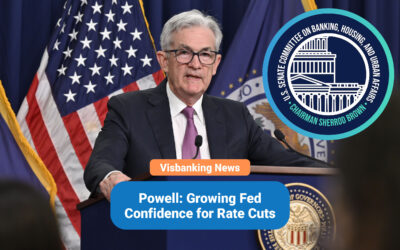By: Ken Chase.
Estimated reading time: 0 minutes
As the financial support system for the modern economy, it was all but inevitable that that the world’s banks would eventually begin to factor environmental, social, and governance (ESG) concerns into their decision-making processes. Driven by concerns about climate change, many businesses and investors have increasingly focused their attention and strategies on prioritizing a planet-first mindset over profitability. To meet those customers where they live, the banking industry has been rapidly incorporating ESG strategies into their business models.
Shareholders, stakeholders, and changing priorities
It wasn’t all that long ago that the main priority for any business was to provide goods and services in the most profitable manner possible. As consumers, investors, and public officials have become more socially and environmentally conscious, however, many companies have responded by adapting their business strategies to better reflect those concerns. Today’s economy is rapidly becoming one in which consumers want to do business with companies that share their values and investors target companies that share their commitment to ESG.
While much of the momentum behind the ESG movement has been driven by private sector forces, governments around the world have also been actively promoting these standards. In some areas of the globe, new laws, regulations, and taxes have been implemented in an attempt to limit carbon emissions. In this country, the current administration has established goals designed to have the federal government achieve net-zero emissions by 2050.
Meanwhile, the SEC is currently proposing new climate disclosure rules that would require public companies to accurately report their emissions, in much the same way federal contractors are now required to do thanks to a May 2021 directive to federal agencies. The Commission recently announced that it has extended the comment period for its new standardized disclosure rules to provide the public an opportunity to weigh in on the proposals. The EPA was already requiring similar reporting for the fossil fuel industry and other high emission companies.
For banks, a challenge and opportunity
While the banking industry has no noticeable carbon footprint of its own, many ESG advocates have noted that it finances other business activity that can significantly contribute to carbon emissions. That is why activists have targeted banking institutions, challenging them to adopt more stringent ESG standards that would limit lending to and investment in business sectors that have been identified as environmentally problematic.
Financial institutions have responded to stakeholders’ concerns by adopting frameworks that attempt to assess and manage both social and environmental risks associated with project finance. One example of this effort involved the launch of the Equator Principles in June 2003. The Principles were created to set minimum due diligence standards to ensure that financial entities consider the environmental and social risks when they conduct risk assessments for project financing. Today, the Equator Principles have been adopted by 132 financial institutions in 38 nations.
While ESG adoption can be challenging for many banks, a greater focus on sustainability can also provide tremendous opportunities. That is especially true in the case of younger investors, who are reportedly twice as eager to invest in investment vehicles that include a focus on social responsibility. Banks that quickly adopt ESG strategies in investment and fund portfolios – and communicate that message to customers – will likely have an advantage when it comes to attracting younger investors as clients.
Balancing people, planet, and profit
The public message from ESG advocates has been clear: focus on the planet and people, instead of profits. More skeptical observers might scoff at that message since any company that fails to think about profit will eventually go out of business. The reality is that today’s banks will need to find a way to balance these concerns by incorporating the best environmental, social, and governance strategies while still focusing on profitability.
Since banks manage deposits and lending for business activities that present a myriad of ESG risks and opportunities, adhering to any ESG framework can be a complex undertaking – even when the risks are a step removed from direct social or environmental impact. Nevertheless, stakeholders are increasingly demanding that banks take accountability for the actions of their customers when those actions run afoul of ESG expectations.
The challenge will be to develop a well-balanced approach that prioritizes stakeholders’ concerns about ESG without losing sight of the need to meet shareholders’ interest in profitable returns on investment. Banks that can meet that challenge should be well-positioned to succeed as the focus on ESG concerns continues to increase in the years and decades to come.




